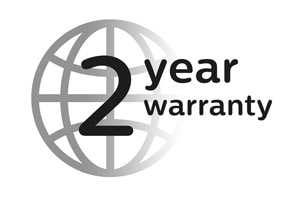Juice and Smoothie Makers Tasty and nutritious smoothies and juices at home

Discover Philips' wide range of centrifugal juicers, slow juicers and blenders

Product warranty
2 year product warranty
from date of purchase
Why drink juices and smoothies?




* Internal tests on grapes, watermelon, tomato, apple, orange, strawberry and pineapple extracting, ranging from 69% to 92% depending on fruit.


Make fresh juices and smoothies
at home
Drinking juices or smoothies is an easy way to get the right amount of fruits and vegetables every day. Delicious with breakfast, on the go, or after exercise. For yourself or for the whole family.

Your favorite ingredients
With a push of a button makes it possible to mix your favorite ingredients. Choose your favorite combinations of fruits and vegetables and make your own juices and smoothies; without extra sugars or other additives.

Increase your daily intake of nutrients
Choosing healthier drinks is a key part of getting a balanced diet. They help increase your intake of nutrients so you can get the recommended daily amount with minimum fuss and maximum taste.
What is the difference?
Discover the differences between a centrifugal juicer, slow juicer and a blender
Do you want a lot of refreshing juice, a shot-concentrated diet or a fiber-rich smoothie? Whether you choose a slow juicer or centrifugal juicer depends on the kind of juice you like. A blender helps you mix different ingredients, such as vegetables and fruits, into fresh juices, smoothies or soups.

Centrifugal Juicers
Refreshing healthy juice



Slow Juicers
Concentrated shot of nutrition



High-Speed Blenders
Fibre rich smoothies


Philips Juicers and High-Speed Blenders
-
Avance Collection
Juicer (1200W)
HR1922/21
- QuickClean
- 1200 W
- XXL feeding tube
-
Viva Collection
Masticating juicer
HR1889/71
- XL tube, 70 mm
- Quick clean, in 90 sec
- Easy assembly
-
7000 Series
High speed blender
HR3760/10
- ProBlend Ultra technology
- HomeID app
- Quick Select Programmes
More on Philips Healthy Drinks
- What is the difference between a centrifugal juicer and slow juicer?
-
The slow juicer differs from the juicer by the way of juice extraction. The centrifugal juicer grinds fruit and vegetables and separates the juice from the pulp by means of centrifuging power, while the slow juicer slowly squeezes the juice from fruit and vegetables. Neither juicer generates heat during juice extraction. Both juicers get the most out of your fresh fruits and vegetables and therefore have similar levels of vitamins and nutrients.
Compared to a centrifugal juicer, a slow juicer squeezes more concentrated juice with more fiber and the juice yield is higher with a slow juicer. On the other hand, a juice from a juicer is ready faster, because you do not have to cut the fruit and vegetables, thanks to the large filling funnel.
If you prefer a firm juice, full of fiber, the slow juicer is the most suitable for you. With both models you can enjoy healthy and delicious juice every day, full of vitamins! - What is the difference between a high-speed blender and a food processor?
-
A food processor, also called a mixer, usually has more functions than a blender has thanks to a variety of accessories. In addition to mixing, a food processor usually also manages to grind, slice and knead dough, which makes it an effective kitchen tool for several different purposes.
A food processor is larger and therefore takes up more space than a blender does, which makes the blender feel smoother and easier to pick up and use. Before purchasing a kitchen appliance, it is therefore a good idea to identify your needs so that you are sure that you are buying the right machine for your purposes. - What fruits and vegetables can I juice with this appliance?
-
The most common fruits and vegetables processed in a juicer are:
- Apples
- Carrots
- Melons
- Pineapples
- Grapes
- Oranges
- Pears
- Nectarines
- Kiwis
- Celery
- Beetroot
- Ginger
- Berries (e.g.strawberries)
Note: Fruit and vegetable that contain starch (e.g. banana, mango, sugar cane, avocado, pumpkin) cannot be juiced, for this purpose use a blender instead.
- Can I juice citrus fruits (as oranges, lemons, limes) with my juicer?
-
- Yes, you can juice citrus fruits with your juicer
- We advise you to peel them before juicing because on the one hand the peel may be chemically treated, and on the other hand the white pith of the fruits tastes bitter and may affect the taste of the juice
- Can I juice all kinds of fruit and vegetables with the juicer?
-
Yes, you can juice almost any kind of fruit or vegetable. Make sure you remove stones from fruits before juicing them.
Very hard and/or fibrous or starchy fruits or vegetables, such as sugar cane, banana and mango, are not suitable for juicing in this appliance.



















